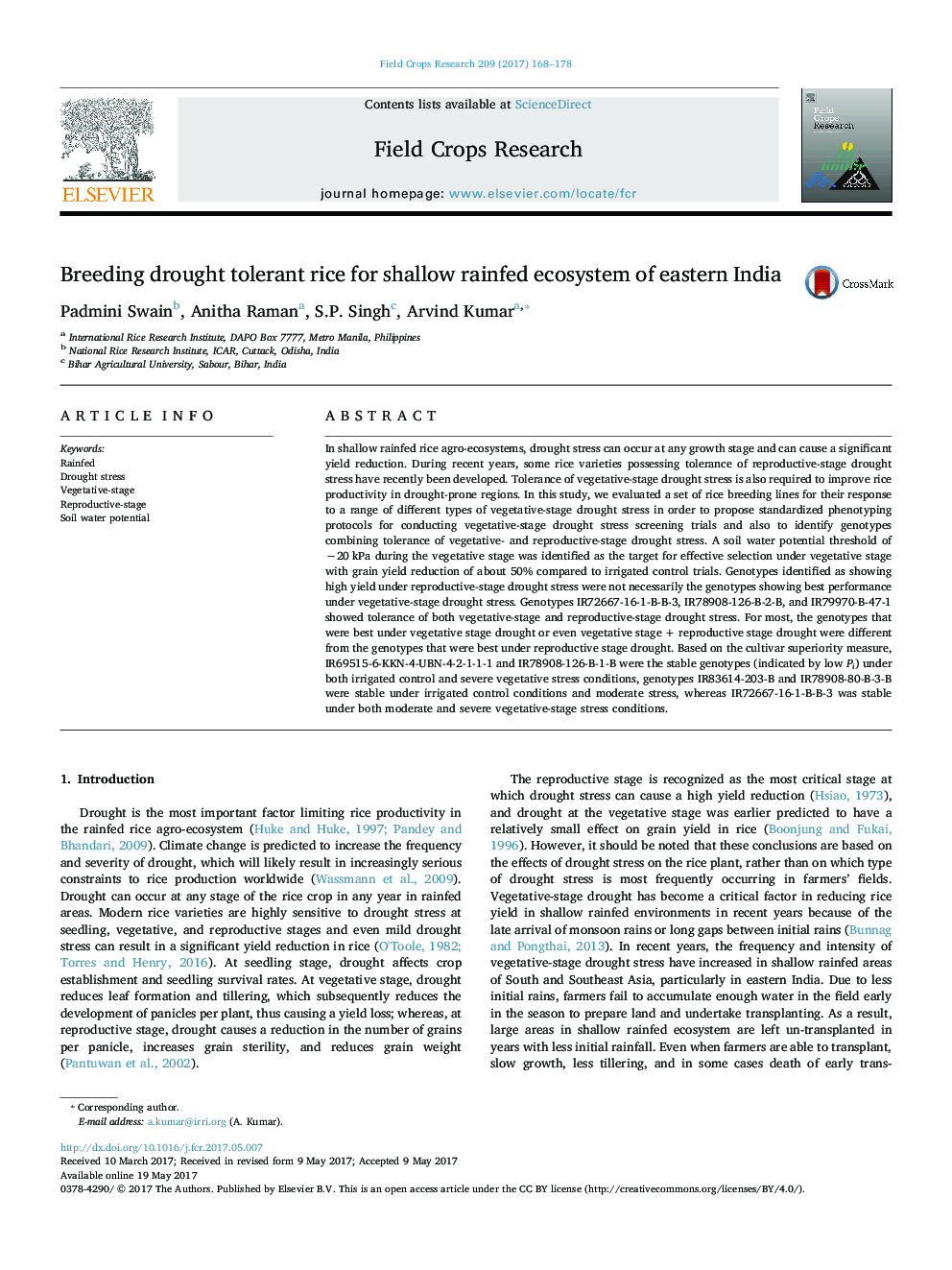| Article ID | Journal | Published Year | Pages | File Type |
|---|---|---|---|---|
| 5761514 | Field Crops Research | 2017 | 11 Pages |
â¢For vegetative-stage drought screening in the dry season, maintaining the soil water potential above â20 kPa as monitored at 30 cm depth is recommended to be able to clearly distinguish between tolerant and susceptible genotypest.â¢This study identified some genotypes that were susceptible to drought in reproductive-stage drought stress but showed tolerance of vegetative-stage drought stress, indicating the distinct response of rice to drought stress at these two growth stages.â¢Combining tolerance of vegetative-stage drought with tolerance of reproductive-stage drought could be accomplished by performing separate vegetative- and reproductive-stage drought stress screening trials, which in this study resulted in the identification of genotypes IR72667-16-1-B-B-3, IR78908-126-B-2-B, and IR79970-B-47-1 as tolerant of both stages of drought stress.â¢The development of improved varieties with combined tolerance of drought stress at multiple growth stages will help farmers in rainfed rice-growing regions maintain stable yields across increasingly unpredictable climatic conditions.
In shallow rainfed rice agro-ecosystems, drought stress can occur at any growth stage and can cause a significant yield reduction. During recent years, some rice varieties possessing tolerance of reproductive-stage drought stress have recently been developed. Tolerance of vegetative-stage drought stress is also required to improve rice productivity in drought-prone regions. In this study, we evaluated a set of rice breeding lines for their response to a range of different types of vegetative-stage drought stress in order to propose standardized phenotyping protocols for conducting vegetative-stage drought stress screening trials and also to identify genotypes combining tolerance of vegetative- and reproductive-stage drought stress. A soil water potential threshold of â20 kPa during the vegetative stage was identified as the target for effective selection under vegetative stage with grain yield reduction of about 50% compared to irrigated control trials. Genotypes identified as showing high yield under reproductive-stage drought stress were not necessarily the genotypes showing best performance under vegetative-stage drought stress. Genotypes IR72667-16-1-B-B-3, IR78908-126-B-2-B, and IR79970-B-47-1 showed tolerance of both vegetative-stage and reproductive-stage drought stress. For most, the genotypes that were best under vegetative stage drought or even vegetative stage + reproductive stage drought were different from the genotypes that were best under reproductive stage drought. Based on the cultivar superiority measure, IR69515-6-KKN-4-UBN-4-2-1-1-1 and IR78908-126-B-1-B were the stable genotypes (indicated by low Pi) under both irrigated control and severe vegetative stress conditions, genotypes IR83614-203-B and IR78908-80-B-3-B were stable under irrigated control conditions and moderate stress, whereas IR72667-16-1-B-B-3 was stable under both moderate and severe vegetative-stage stress conditions.
